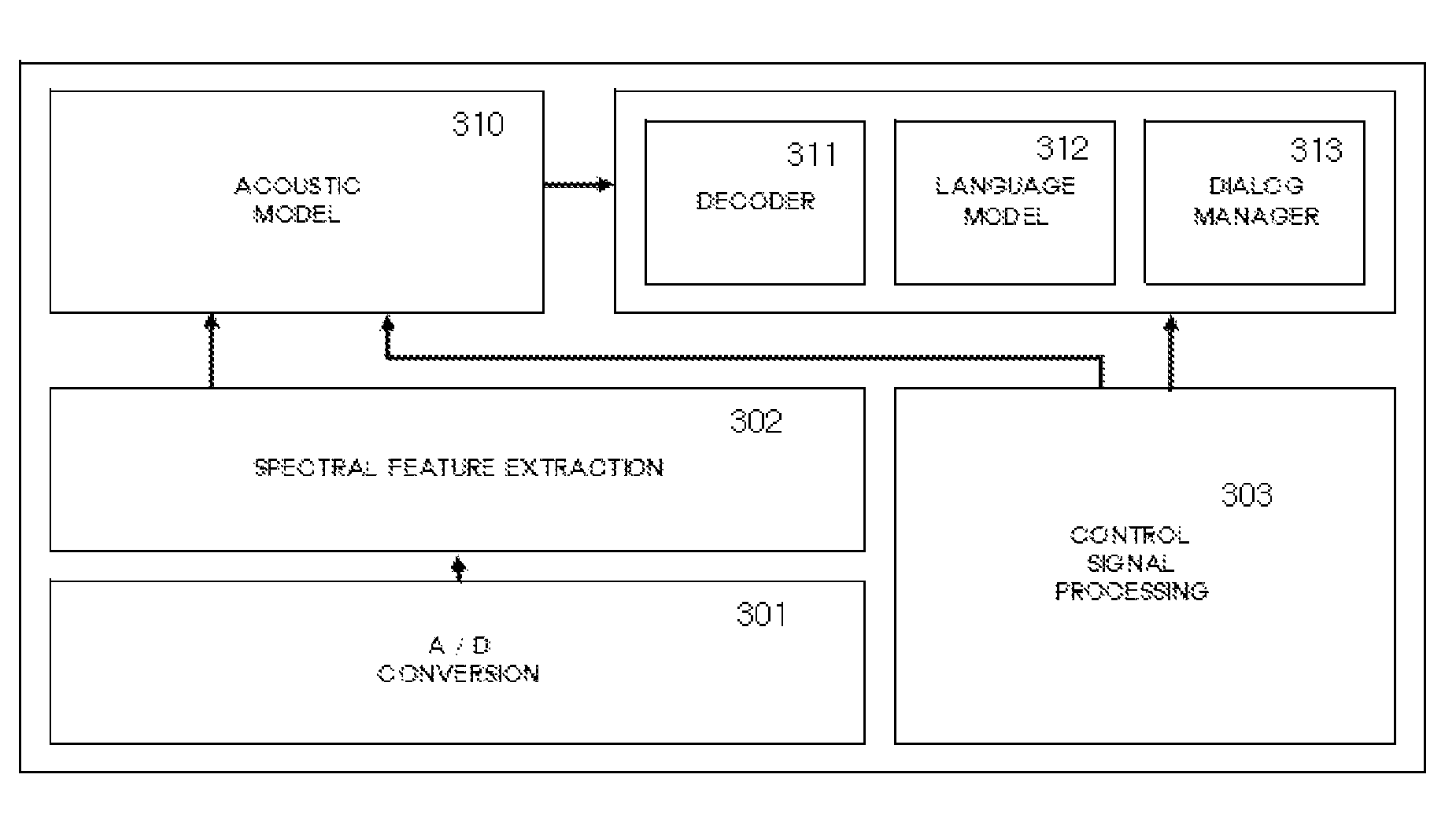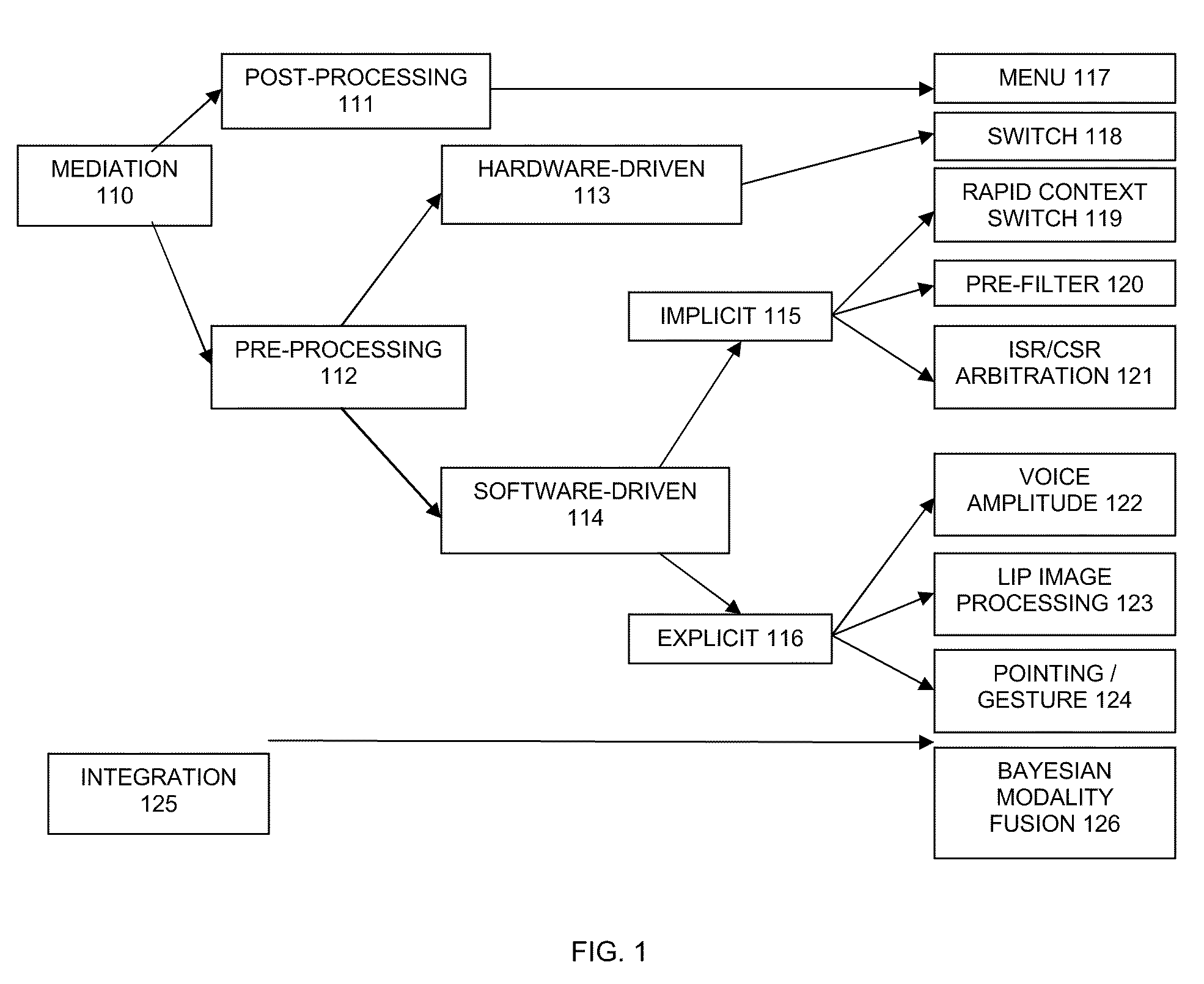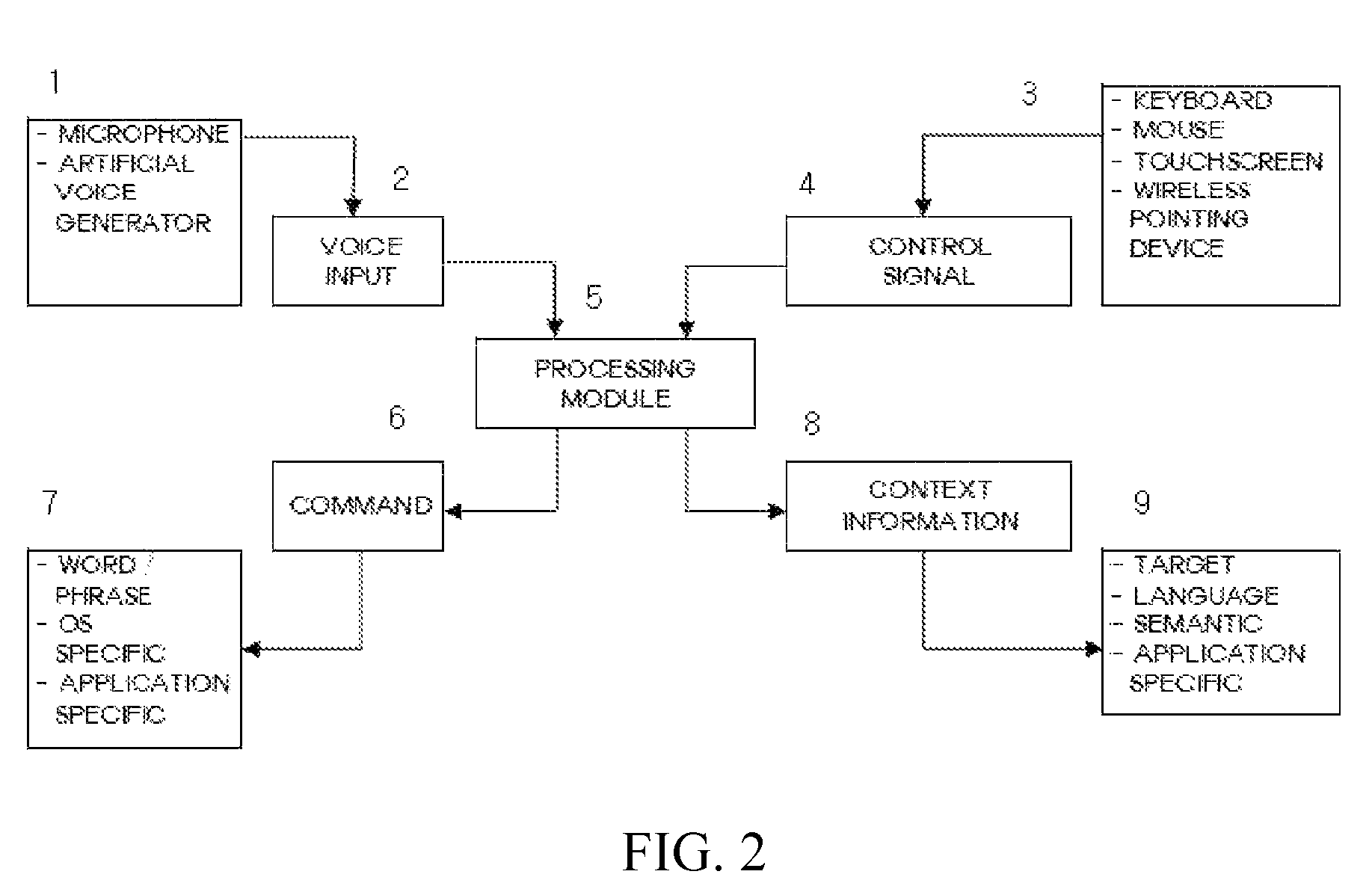Multimodal unification of articulation for device interfacing
a multimodal input and device technology, applied in the field of voice based multimodal input system, can solve the problems of increasing computational cost due to independent processing, each reference suffering from one or more disadvantages, etc., and achieves the effect of facilitating inference, facilitating inference, and facilitating interpretation of commands
- Summary
- Abstract
- Description
- Claims
- Application Information
AI Technical Summary
Benefits of technology
Problems solved by technology
Method used
Image
Examples
example 1
[0066]A voice recognition system according to Example 1 of the present invention will be described. In accordance with the system of the present example, processing module is embodied as a software, more precisely as an interface to the operating system. Operating environment can be implemented in variety of computer system configurations, including personal computers, server computers, hand-held devices, multiprocessor systems, microprocessor-based or programmable consumer electronics, networked PCs, minicomputers, mainframe computers, mobile phones, navigation systems and the like. According to an embodiment of the present invention, operating environment is a personal computer with a multi-point touch-screen. Voice input is received through a wireless or wired headset. Control signal is preferably received through the touch-screen, or keyboard / mouse if necessary. In the case of touch-screen or tablet PC, a floating interface is displayed for touch and / or pen based control signal ...
example 2
[0067]In accordance with a voice recognition system of Example 2, voice input signal is generated through a non-audible speech, such as whispering or unvoiced lip motion. A large number of applications exist for non-audible voice recognition interface, such as in surveillance operations, military operations, or even where a person simply wishes to not be overheard while speaking in a public setting. Likewise, there are a number of situations in which surrounding or background noise is so great, that common levels of conversation or even high amplitude speech cannot be heard, such as at airport, on the battlefield, or in industrial environments. Finally, there are a number of applications, where audible speech itself, although desired, may be too awkward or distracting, such as in the case of dictation, or in a library.
[0068]There are number of ways to implement non-audible voice recognition interface. U.S. Pat. No. 5,884,257 which is incorporated herein by reference discloses a meth...
example 3
[0072]Next, a voice recognition system in Example 3 of the invention will be described. In this example, a voice recognition system is implemented on a mobile device with a headset. Numeric pads or keyboard do not work well in a mobile setting. Walking and typing, though feasible, is not realistic for everyday use. Voice recognition systems available to mobile devices can be improved without sacrificing battery power or size constraints associated with more processing power. By way of example, and not limitation, spoken languages with clear syllable delimitation such as Korean or Japanese can be recognized with ease in the scheme provided by the current invention. For a mobile device with a touch-screen, a tap for each syllable and scrub for space is enough to improve the recognition capability to an acceptable level. This Morse-code like tap and scrub does not sacrifice much in the way of mobility either. In Korean and language, allophones do exists, so there is a need for minor po...
PUM
 Login to View More
Login to View More Abstract
Description
Claims
Application Information
 Login to View More
Login to View More - R&D
- Intellectual Property
- Life Sciences
- Materials
- Tech Scout
- Unparalleled Data Quality
- Higher Quality Content
- 60% Fewer Hallucinations
Browse by: Latest US Patents, China's latest patents, Technical Efficacy Thesaurus, Application Domain, Technology Topic, Popular Technical Reports.
© 2025 PatSnap. All rights reserved.Legal|Privacy policy|Modern Slavery Act Transparency Statement|Sitemap|About US| Contact US: help@patsnap.com



